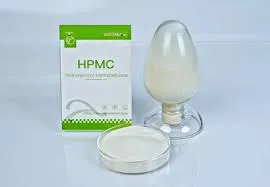
Nov . 27, 2024 22:31 Back to list
Synthesis and Applications of Hydroxyethyl Cellulose in Various Industries
Hydroxyethyl Cellulose Synthesis An Overview
Hydroxyethyl cellulose (HEC) is a water-soluble polymer derived from cellulose, widely used in various industries, including pharmaceuticals, cosmetics, and food production. Its properties, such as thickening, gelling, and emulsifying, make it invaluable for formulating products that require enhanced texture and stability. The synthesis of hydroxyethyl cellulose involves several key steps, including the derivatization of cellulose, reaction with ethylene oxide, and purification. This article provides an overview of the HEC synthesis process, its applications, and the importance of controlling synthesis parameters.
Raw Materials and Initial Preparation
The primary raw material for synthesizing hydroxyethyl cellulose is cellulose, which can be sourced from various natural fibers such as wood pulp, cotton, or even agricultural residues. The cellulose must undergo several treatments to remove impurities and achieve a high degree of purity. Typically, cellulose is first treated with a dilute alkaline solution, which helps to depolymerize and activate the cellulose molecules, making them more reactive for further chemical modifications.
Derivatization Process
The derivatization of cellulose is a critical step in the synthesis of hydroxyethyl cellulose. In this process, the hydroxyl groups present in the cellulose structure are substituted. To achieve this, cellulose is reacted with ethylene oxide, a behavior that introduces hydroxyethyl groups onto the cellulose backbone. The reaction requires careful control of conditions such as temperature, pressure, and the concentration of reactants.
Traditionally, the reaction takes place under alkaline conditions, which helps to activate the cellulose and enhance its reactivity. Moreover, the presence of a catalyst can further accelerate the reaction, leading to a more efficient synthesis process. Throughout the reaction, it is crucial to monitor the degree of substitution (DS), which refers to the average number of hydroxyethyl groups introduced per anhydroglucose unit in the cellulose. A well-controlled DS can significantly influence the final properties of the hydroxyethyl cellulose, such as solubility, viscosity, and thermal stability.
Optimal Reaction Conditions
The optimization of reaction parameters is vital to achieve a high-quality product. Reaction time, temperature, and ethylene oxide pressure are among the factors that impact the final yield and characteristics of hydroxyethyl cellulose. Higher temperatures and prolonged reaction times can lead to an increased degree of substitution. However, excessive conditions might also cause depolymerization and degradation of cellulose, which can adversely affect the quality of the final product.
hydroxyethyl cellulose synthesis

The choice of solvent also plays a crucial role in the synthesis process. Water is a common solvent for the reaction, as it facilitates the interaction between reactants and allows the resulting hydroxyethyl cellulose to easily disperse. However, in some cases, using organic solvents may improve solubility and reactivity, depending on the desired properties of the final product.
Purification and Characterization
Once the derivatization is complete, the next step involves purifying the synthesized hydroxyethyl cellulose to remove any unreacted ethylene oxide, residual catalysts, and by-products. This purification can be achieved through methods such as dialysis, precipitation, or filtration. Proper purification is essential to ensure the safety and efficacy of the final product, especially for applications in the pharmaceutical and food industries.
Characterization techniques, such as nuclear magnetic resonance (NMR) spectroscopy, Fourier transform infrared (FTIR) spectroscopy, and gel permeation chromatography (GPC), are commonly employed to determine the structural integrity, degree of substitution, and molecular weight of hydroxyethyl cellulose. Thorough characterization is essential not only for quality control but also for developing applications tailored to specific industrial needs.
Applications of Hydroxyethyl Cellulose
Hydroxyethyl cellulose boasts a broad range of applications due to its versatile properties. In the pharmaceutical industry, it is utilized as a binder and film-forming agent in tablets and topical formulations. In cosmetics, HEC serves as a thickener and stabilizer in creams and lotions. Furthermore, the food industry employs hydroxyethyl cellulose as a food additive for enhancing texture and extending shelf life.
Conclusion
The synthesis of hydroxyethyl cellulose is a well-established process that requires careful consideration of various parameters to attain the desired product characteristics. With its extensive range of applications, HEC continues to be essential in many industries, highlighting the importance of ongoing research and innovation in polymer synthesis to meet the growing demand for high-performance materials. As technology advances, we can anticipate further enhancements in the production processes and applications of hydroxyethyl cellulose, solidifying its role as a vital polymer in modern formulations.
-
Versatile Hpmc Uses in Different Industries
NewsJun.19,2025
-
Redispersible Powder's Role in Enhancing Durability of Construction Products
NewsJun.19,2025
-
Hydroxyethyl Cellulose Applications Driving Green Industrial Processes
NewsJun.19,2025
-
Exploring Different Redispersible Polymer Powder
NewsJun.19,2025
-
Choosing the Right Mortar Bonding Agent
NewsJun.19,2025
-
Applications and Significance of China Hpmc in Modern Industries
NewsJun.19,2025







